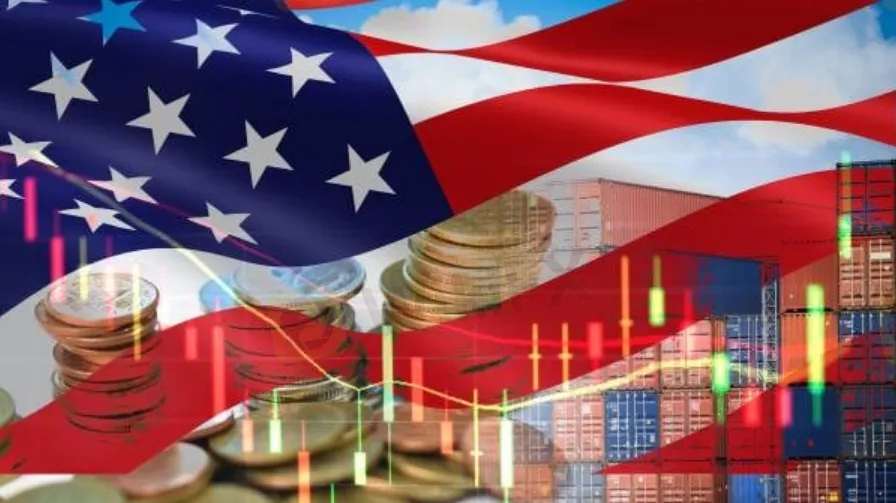简体中文
繁體中文
English
Pусский
日本語
ภาษาไทย
Tiếng Việt
Bahasa Indonesia
Español
हिन्दी
Filippiiniläinen
Français
Deutsch
Português
Türkçe
한국어
العربية
【MACRO Alert】Federal Reserve officials are at odds over inflation and interest rates, with markets now betting on a Fed rate cut!?
Sommario:After considering various perspectives from Federal Reserve officials, the latest trends in US economic data, and global central banks' monetary policy trends, the conclusion can be drawn: the future direction of US inflation and interest rate policies is fraught with uncertainty. Market expectations suggest that against a backdrop of slowing economic growth, the Fed may cut interest rates this year. Simultaneously, heightened geopolitical tensions have increased demand for safe-haven assets, le
The issue of U.S. inflation and its impact on interest rate policy has long been a focal point in financial markets. Recently, Minneapolis Fed President Neel Kashkari, Richmond Fed President Thomas Barkin, and Chicago Fed President Charles Evans shared their views on this matter.
Neel Kashkari, speaking at the annual conference of the Michigan Bankers Association, suggested that U.S. inflation may take two years to retreat to the Federal Reserve's targeted 2% level. He noted that current wage growth is too rapid, complicating efforts to reduce inflation. Kashkari believes that if inflation persists, interest rates may remain elevated for an extended period; if inflation declines, the Fed could normalize rates more quickly. He anticipates the Fed may cut rates once this year, contingent on future economic data, particularly inflation, economic, and labor market indicators.

Meanwhile, Barkin expressed caution regarding rate cuts. He believes a clearer understanding of the inflation trajectory is needed before considering any easing action. Barkin emphasized the importance for the Fed to make sustained and substantial progress towards achieving the 2% inflation target, suggesting the current policy stance is appropriate. He also mentioned that now may not be the optimal time to provide guidance on future policy adjustments if economic conditions remain stable.
On the other hand, Evans holds a more accommodative stance. In an interview with Fox News, he indicated that if inflation continues to moderate, the Fed would have room to cut rates. Evans appreciated the recent consumer price report, which showed inflation slowing for the second consecutive month after an unexpected rise earlier in the year. He believes that if more inflation data similar to this becomes available, the conditions for rate cuts would become more favorable.
At the recent Fed policymakers' meeting, interest rates were held steady between 5.25% and 5.5%, the highest level in over two decades. According to median forecasts, policymakers expect one rate cut in 2024 and possibly four cuts in 2025. However, the statements from Barkin and Kashkari indicate internal Fed disagreements over the direction of interest rate policy, heavily contingent on future economic data.

The outlook for U.S. inflation and interest rate policy remains fraught with uncertainty. Although markets are increasingly confident that the Fed will initiate an easing cycle this year, market participants will continue to watch Fed developments closely. Against the backdrop of U.S. economic data showing a slowdown in growth, market expectations are that the Fed may cut rates this year. This expectation has driven the spot price of gold to rise by over 1%, reaching $2,360 per ounce, its highest level since June 7, and spot silver has seen a 3% intraday gain, reaching a peak in almost a month.
Last week's initial jobless claims in the U.S. came in at 238,000, slightly above the expected 235,000, indicating a stable labor market. Housing starts in May dropped 5.5% to 1.28 million units, the lowest in four years. Weak retail sales data further hinted at a sluggish economic activity in the second quarter. Lower interest rates reduce the opportunity cost of holding the non-yielding gold. Globally, 20 central banks have already cut rates, and the Fed may join the trend later this year.
Economists worry that the Fed may delay rate cuts too long, increasing the risk of a recession. Mohamed El-Erian, the chief economist at Allianz, believes that if the Fed cuts rates only once by the end of the year, the slowdown in the economy could exceed expectations, with the current risk of a U.S. recession at 35%. Geopolitical tensions, including the situation in the Middle East and potential instability in Asia, are also increasing market demand for safe-haven assets.

After considering various perspectives from Federal Reserve officials, the latest trends in US economic data, and global central banks' monetary policy trends, the conclusion can be drawn: the future direction of US inflation and interest rate policies is fraught with uncertainty. Market expectations suggest that against a backdrop of slowing economic growth, the Fed may cut interest rates this year. Simultaneously, heightened geopolitical tensions have increased demand for safe-haven assets, leading to an increase in precious metal prices. Investors and decision-makers should closely monitor economic indicators and policy changes to navigate the complex challenges in the economy and financial markets. The economic outlook of the United States and the Fed's policy decisions will continue to be a focal point of global attention.
Disclaimer:
Le opinioni di questo articolo rappresentano solo le opinioni personali dell’autore e non costituiscono consulenza in materia di investimenti per questa piattaforma. La piattaforma non garantisce l’accuratezza, la completezza e la tempestività delle informazioni relative all’articolo, né è responsabile delle perdite causate dall’uso o dall’affidamento delle informazioni relative all’articolo.
WikiFX Trader
Tickmill
IC Markets Global
GO MARKETS
VT Markets
FxPro
FXTM
Tickmill
IC Markets Global
GO MARKETS
VT Markets
FxPro
FXTM
WikiFX Trader
Tickmill
IC Markets Global
GO MARKETS
VT Markets
FxPro
FXTM
Tickmill
IC Markets Global
GO MARKETS
VT Markets
FxPro
FXTM
Rate Calc


